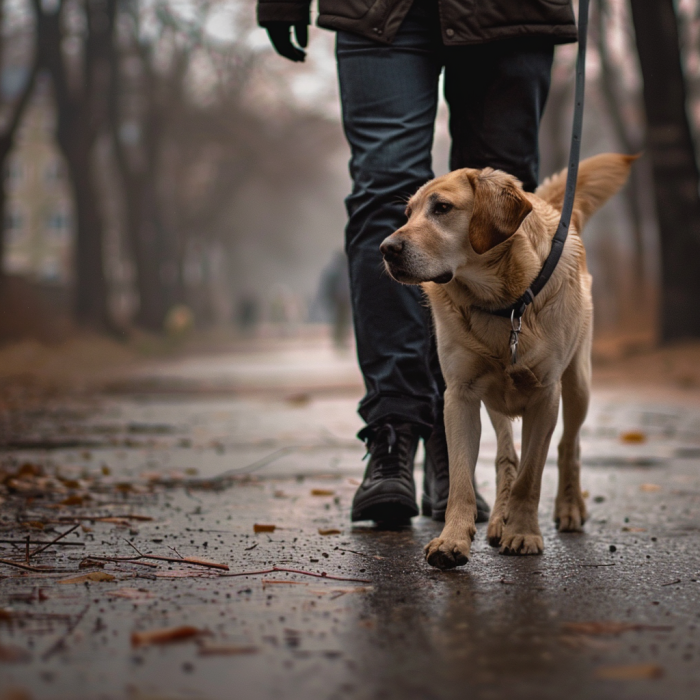How Can You Correct Common Dog Behaviors Using Effective Training?
MAY 31, 2024

Jumping: One of the most common complaints among dog owners is their dog jumping on people. While some might see it as a form of greeting, it can be both dangerous and annoying. Start by ignoring your dog when they jump. Do not make eye contact, talk, or touch them. When they calm down and keep all four paws on the ground, reward them with attention. If your dog continues to jump, use a corrective method such as a quick tug on the leash paired with a firm ‘No’. Consistency is key here.
Barking: Excessive barking can be disruptive and frustrating. To control this behavior, first identify the trigger. Is your dog barking at strangers, other dogs, or noises? Once you identify the cause, use a correction-based technique such as a citronella spray collar. Pair this with a verbal command like ‘Quiet’. Reward the dog when they stop barking as instructed.
Chewing: Destructive chewing can ruin your belongings and pose a safety hazard for your dog. Redirect this behavior by providing appropriate chew toys. Whenever you catch your dog chewing on something they shouldn’t, use a correction like a firm ‘No’ or a loud noise to startle them and then immediately give them a chew toy. Over time, they will learn which items are acceptable to chew on.
Pulling on Leash: Proper leash manners are essential for enjoyable walks. If your dog is pulling on the leash, start by using a short, sturdy leash to maintain control. When they start to pull, stop walking immediately. Use a sharp correction by tugging the leash and saying ‘Heel’. Once the dog returns to your side, reward them with praise and continue walking. Repeat this process consistently.
Conclusion: Consistency and firmness are the cornerstones of correction-based training methods. By employing these techniques, you will establish yourself as the dominant figure in the dog-owner relationship, effectively managing and addressing behavioral issues. Always remember to balance corrections with positive reinforcements to encourage desirable behavior. With patience and persistence, any dog can learn to be well-behaved.
More in Training - Dominance Based
September 30, 2024
Understanding the Bulldog: Training Insights for a Strong Bond
May 31, 2024
How Can You Correct Common Dog Behaviors Using Effective Training?
May 27, 2024
How Can You Understand Compulsive Behaviors in Lesser-Known Dog Breeds?
May 24, 2024
How Can Assertive Leadership Shape Your Schnauzer’s Training?
March 25, 2024
How Can You Effectively Manage Your Dog's Separation Anxiety?
March 07, 2024
How to Make Easter Enjoyable for Your German Shepherd
February 14, 2024
How Valentine's Day Can Strengthen Your Bond With Your Dog
January 31, 2024
How Can You Effectively Train Your Poodle?